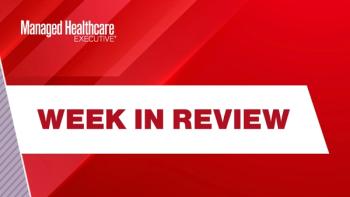
Disruptive SHOP entrants take marketshare
MCOs are looking at each segment separately to assess opportunities for small business
If all goes according to plan, the Small Business Health Options Program (SHOP) exchanges will be operating this fall-albeit with fewer choices than originally intended. For health plans, the SHOPs represent an opportunity to expand into new markets. However, plans are proceeding carefully, picking and choosing which markets in which they want to compete.
In the grand scheme of the Patient Protection and Affordable Care Act (PPACA) implementation, the SHOP has not gotten as much attention as other elements of the law. This, in turn, is reflected in the amount of action health plans are taking when it comes to the SHOPs. For the most part, the state health insurance exchanges that promise to introduce health plans to significant new populations of subsidy-eligible individuals needing to purchase health coverage are the main focus of many health plans’ efforts.
“If you look at how many issuers have applied to participate in both individual and the SHOP exchanges, the SHOP exchange is showing much less interest from the carrier side,” says Paul Lambdin, a director with Deloitte Consulting in Stamford, Conn.
Indeed, he notes that health plans needed to be convinced that changing business models and practices will be worthwhile to get on the SHOP exchange.
It hasn’t helped that the federal government has delayed for one year the employer mandate and the implementation of “employee choice” on federally run state health insurance exchanges. Instead, SHOPs on federally run exchanges will only be able to offer each employer one plan with all different levels of coverage for the first year. In addition, some of the states that are running their own exchanges may opt out of the employee choice model for the first year.
“When you take away employee choice, the SHOP is more of a yawn,” says Lambdin. “There are states where only one or two or even zero plans have applied to participate in the SHOP.”
Picking and choosing
No health plan or carrier can compete in every market. Instead, they are carefully choosing where to compete, especially when it comes to the SHOP.
“Each SHOP exchange is set up differently and has different protocols and different ways of doing things,” says Vince Ashton, president and CEO of HealthPass New York, which is working with the state of Connecticut on its SHOP exchange. “Every carrier is looking individually at each marketplace and saying what is the opportunity on the small business side? What is my resource strain to pursue that opportunity?”
However, plans that are not careful could find their market share eroded by new entrants into the market. For example, some of the new co-op plans could be unexpectedly competitive by offering the lowest price point on the market even though they lack brand recognition or a strong, high quality provider network.
“If employers include these carriers in employee choice as the bronze plan option, the co-op could offer the lowest price point in the market,” says Lambdin.
This is an example of how larger plans could lose market share to disruptive and potentially lower price point players, says Lambdin.
“These players are quite happy to pull a couple of members out of every group to gain market share. They don’t need every member of the group,” he says.
Larger plans that do not want to disaggregate their group business may find that they must pay attention to the SHOP over time. Otherwise, the SHOP could cause some disruption in the small group marketplace and could be somewhat of a threat to established group players in that market.
“Employee choice is the lynchpin to disrupting the market,” says Lambdin. “Over time, the established players will have to take to take that offering seriously.”
Product is key
Success on the SHOP will depend on the products offered. As the exchanges bring price competitiveness to the fore, products will become more commoditized. Therefore, health plans need to find other ways to make their products stand out. For example, although not offering employee choice during the first year would allow plans to simplify their SHOP infrastructure, plans could miss out on an opportunity to differentiate themselves.
In other words, if health plans are able to offer something like employee choice on their own, “it could show real value by offering a small business employer something they couldn’t get anywhere else,” says Lambdin.
Ashton points out that product goes well beyond the plan design of deductibles and coinsurance.
“It is the entire design of the product,” he says. “The two big diffentiators are price point and the healthcare delivery network. The right price point could siphon off membership from larger share players in that market.”
Unlike the individual exchanges, which are expected to have a significant impact on the individual coverage immediately, the SHOPs will be a much slower build up to being just as much of a game changer.
“As the SHOPs mature and more and larger employers gain access to them, they could become even more disruptive to the marketplace,” says Ashton. “Carriers need to pull people in on the SHOP by having a better value proposition” than their competitors.
One state’s experience
What health plans can offer through the SHOP will vary by each state and, sometimes, by market in each state. New Mexico is running its own SHOP exchange and is currently reviewing what carriers will participate and what plans they will offer, according to J. Deane Waldman, MD, a member of the board of directors of the New Mexico Health Exchange.
Overall, Dr. Waldman says he is pleasantly surprised at the number of carriers participating in the SHOP exchange.
“We anticipated that three carriers would participate but we ended up having five competitors on the SHOP,” he says.
He attributes that interest to the level of flexibility the state has when choosing what types of plans carriers can offer.
“Our carriers are designing different packages for different people,” says Dr. Waldman.
For example, he calls it ludicrous to offer a health plan to a 65 -year-old couple or a single 30-year-old man that covers pre-natal care and pediatric services.
“Why should they pay for it?” says Waldman, “That is something that our state it is recognizing and that is part of why I’m encouraged. We have a level of flexibility that I think a number of other states do not enjoy.”
If healthcare delivery network will be a key differentiator, plans need to attend to that part of the business with care. If there is one area where Waldman has concerns, it is in the networks health plans will be able to offer if they come in with rates that are too low.
“I don’t want anybody to lose sight of the fact that, if that low rate does not lead to timely quality care then health insurance at a hundred bucks a month is worthless if you can’t see a doctor,” he says. Therefore, he notes that maintaining an adequate number of doctors of each type in network will be key.
Implementation of the SHOPs and all of the other elements of the PPACA are very much a work in progress. To compete, health plans need to remain vigilant in order to remain relevant.
“If you don’t want to be the first one out of the gate, you always want to be the second,” says Ashton. That way, “you are not the one changing the marketplace but you can make sure you are the first to catch up.”
Newsletter
Get the latest industry news, event updates, and more from Managed healthcare Executive.

















































